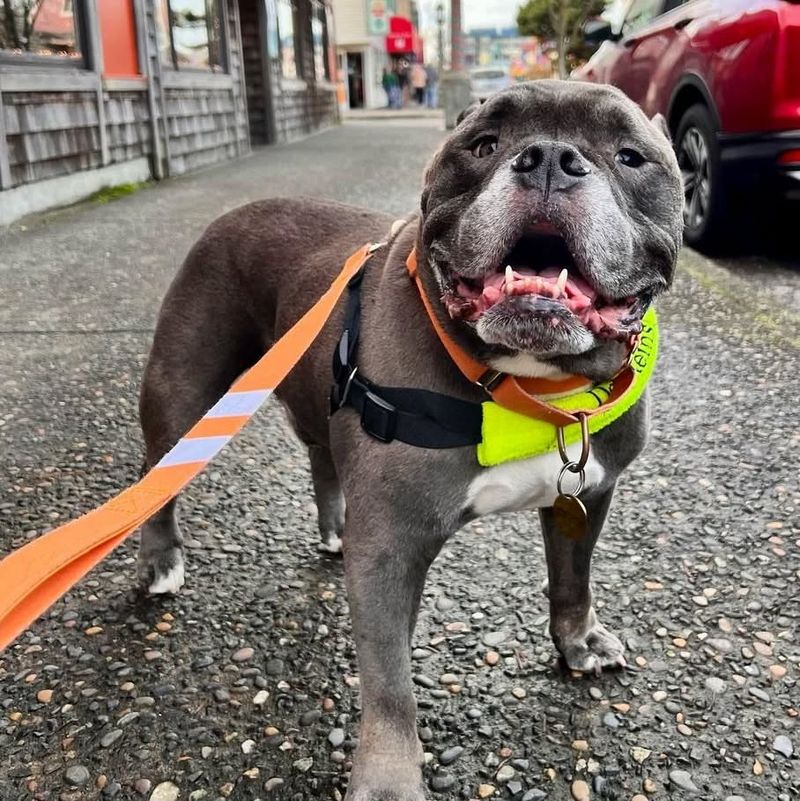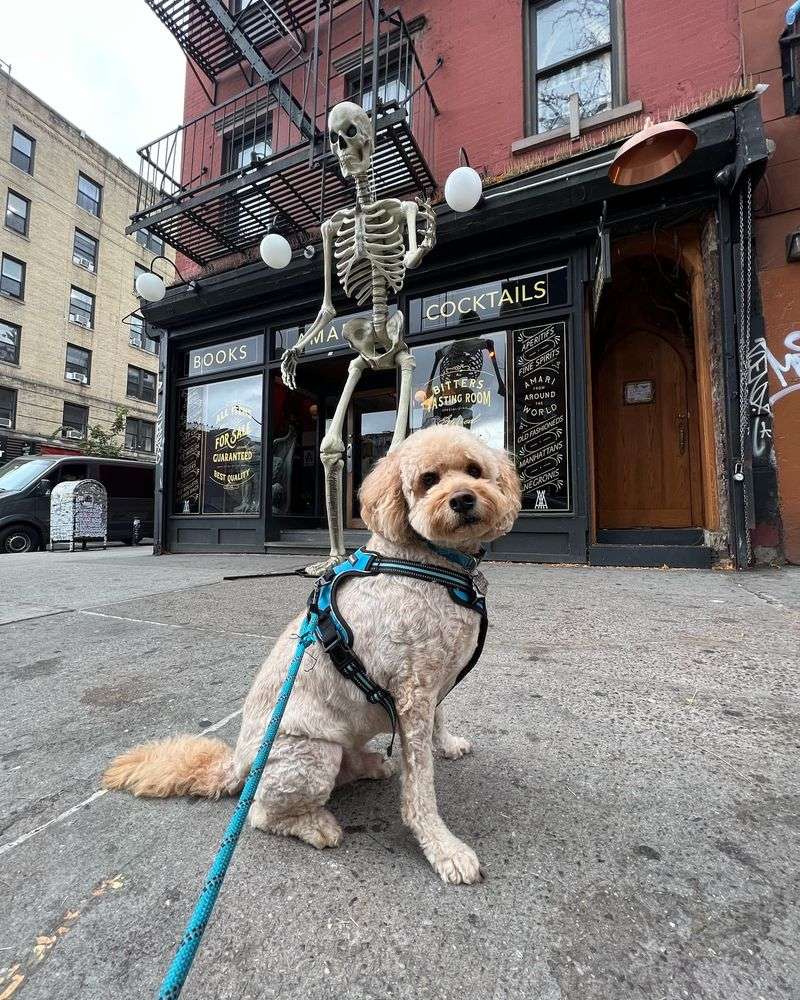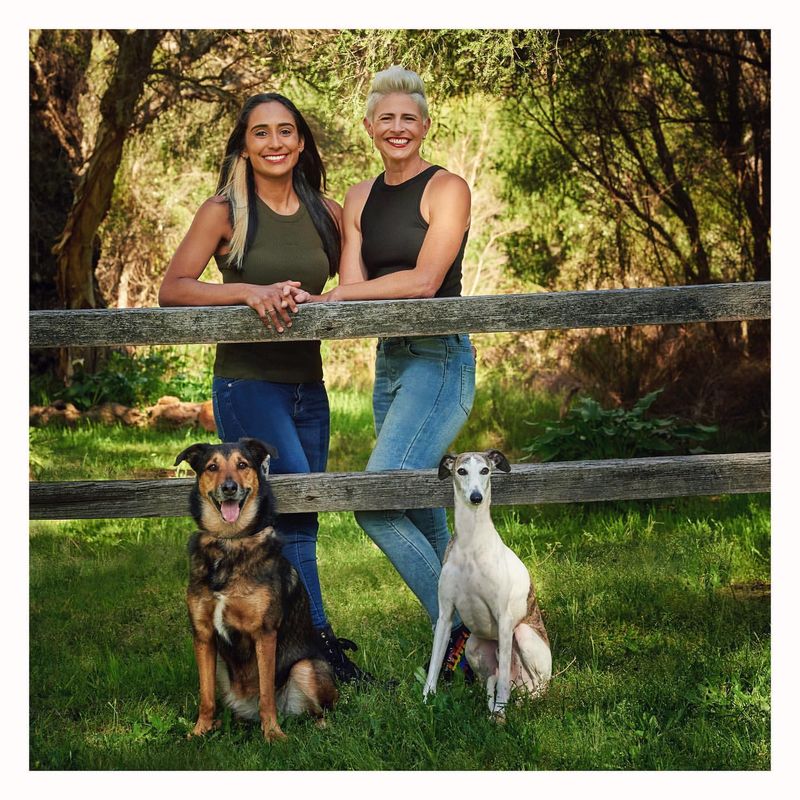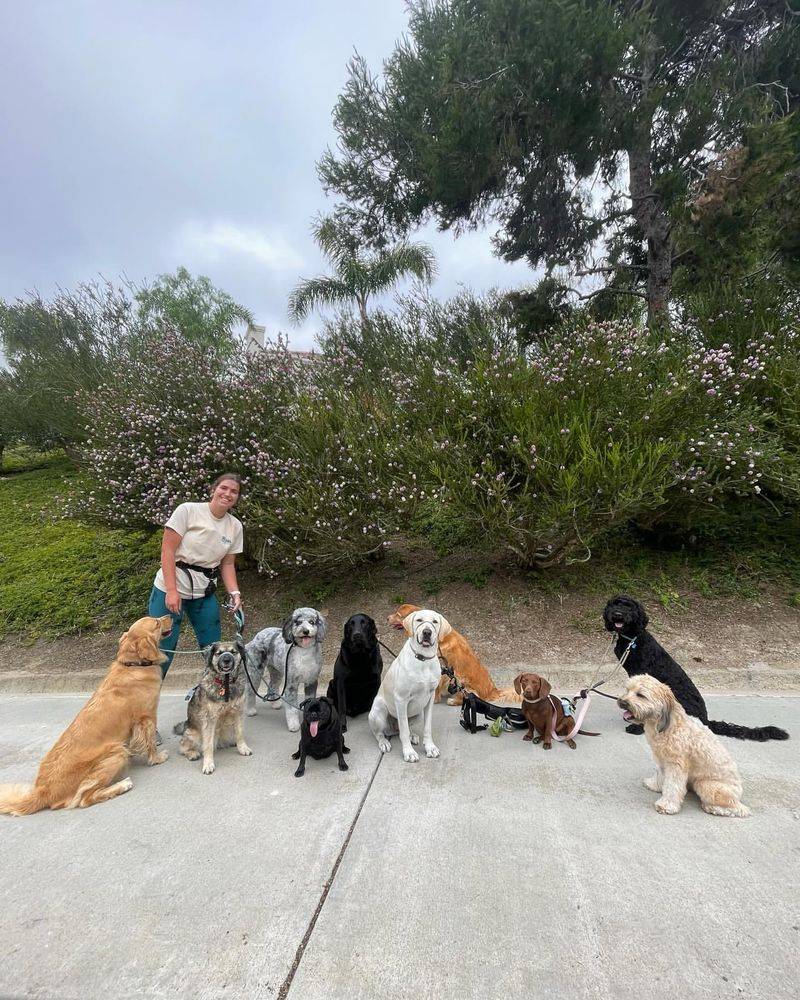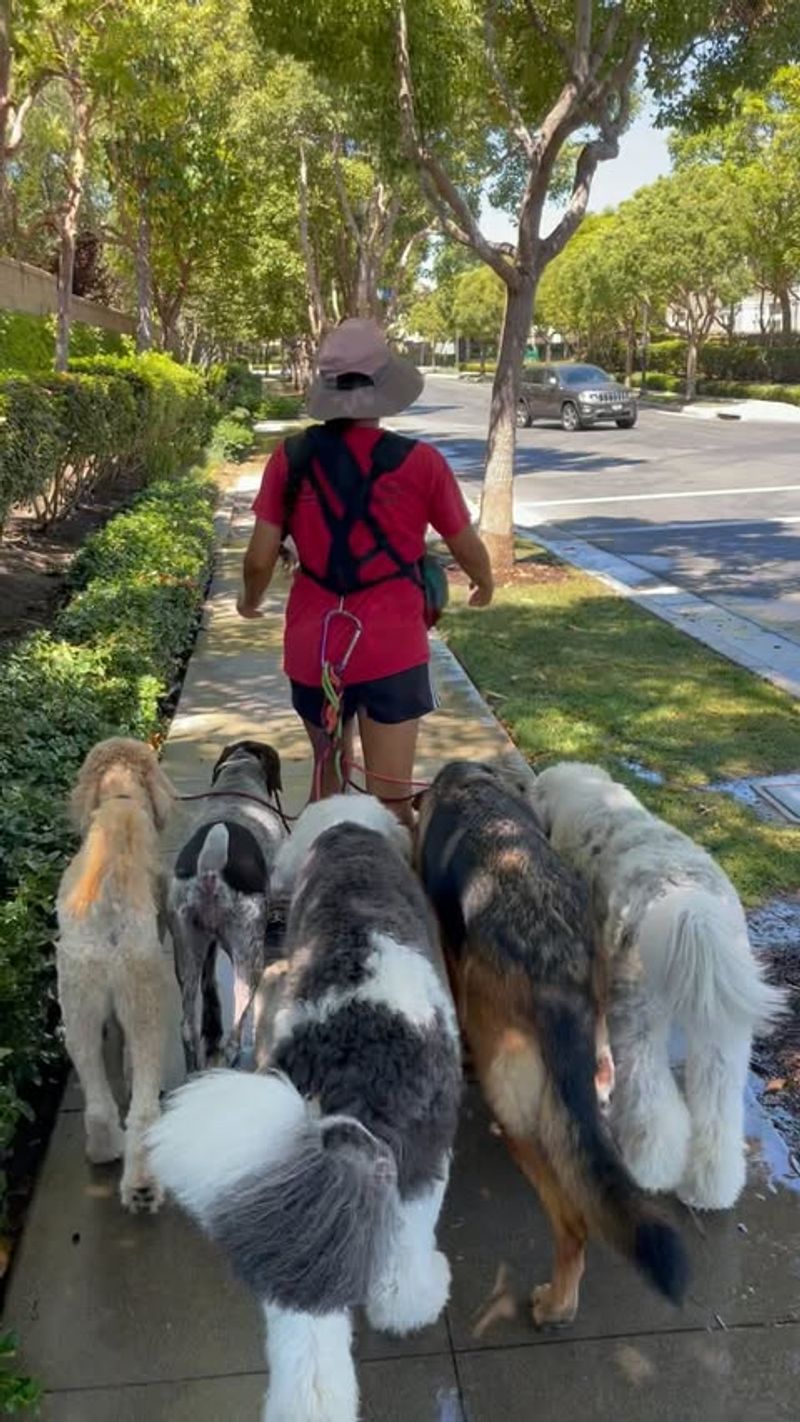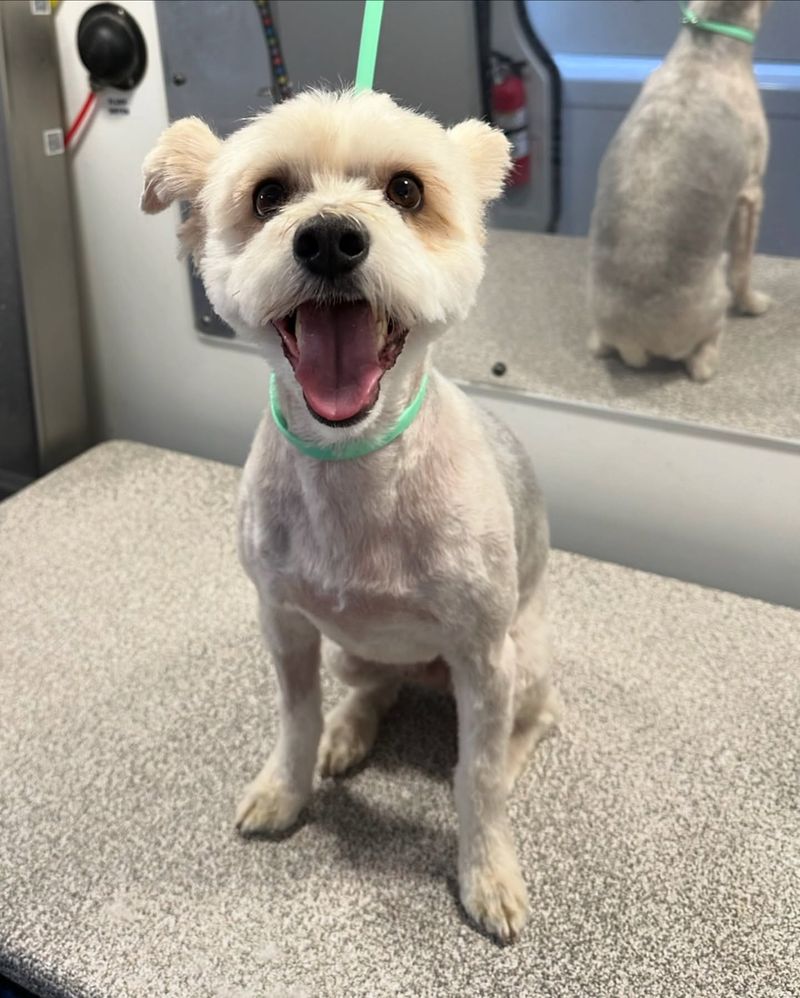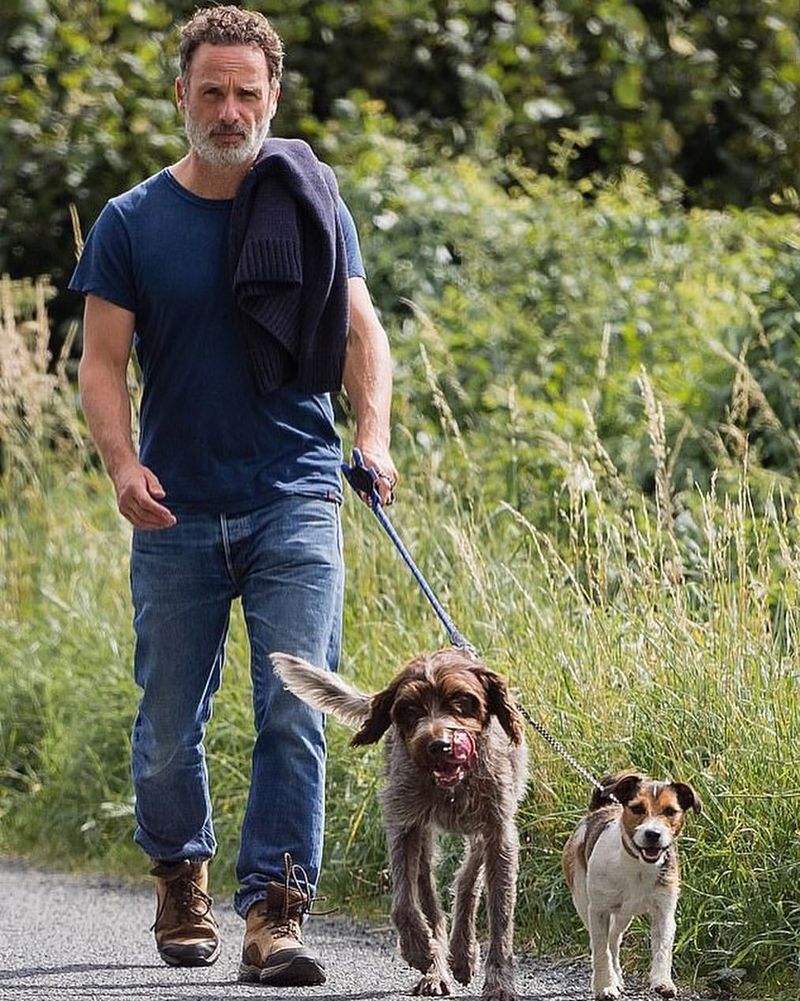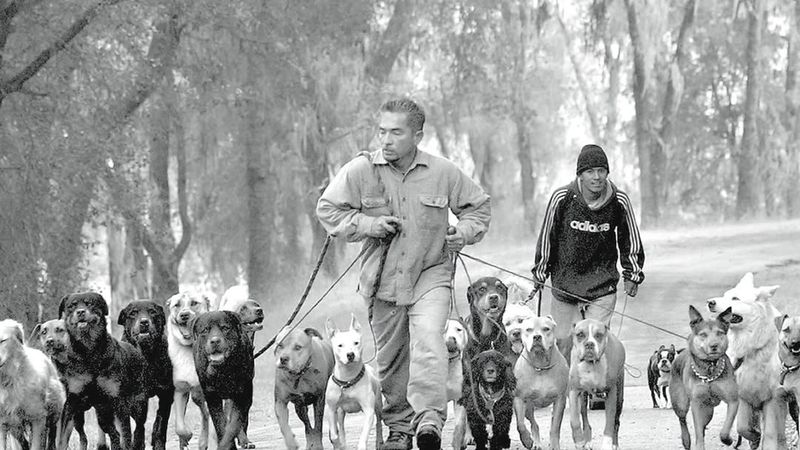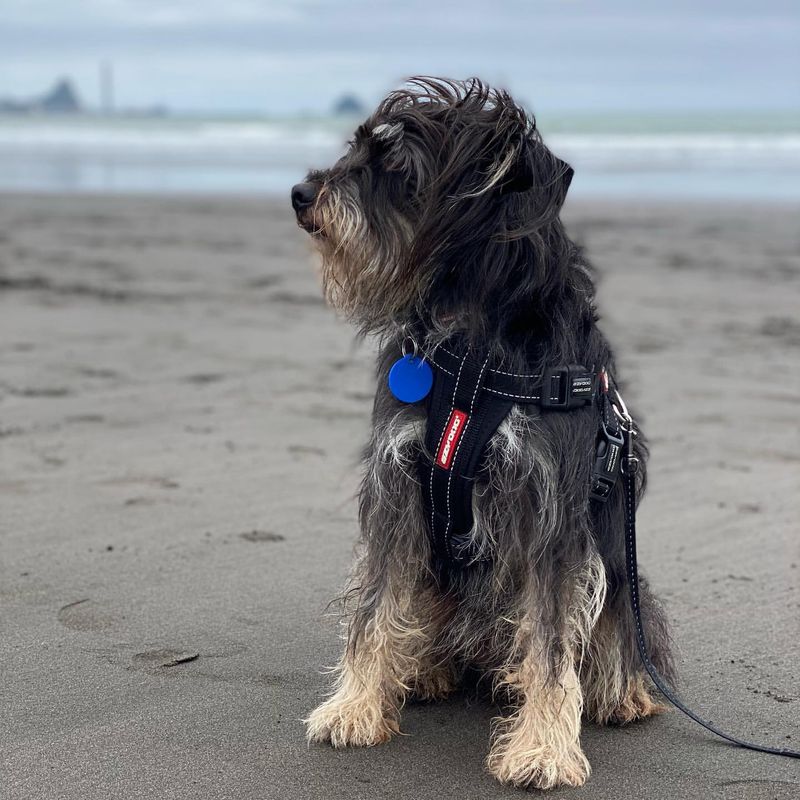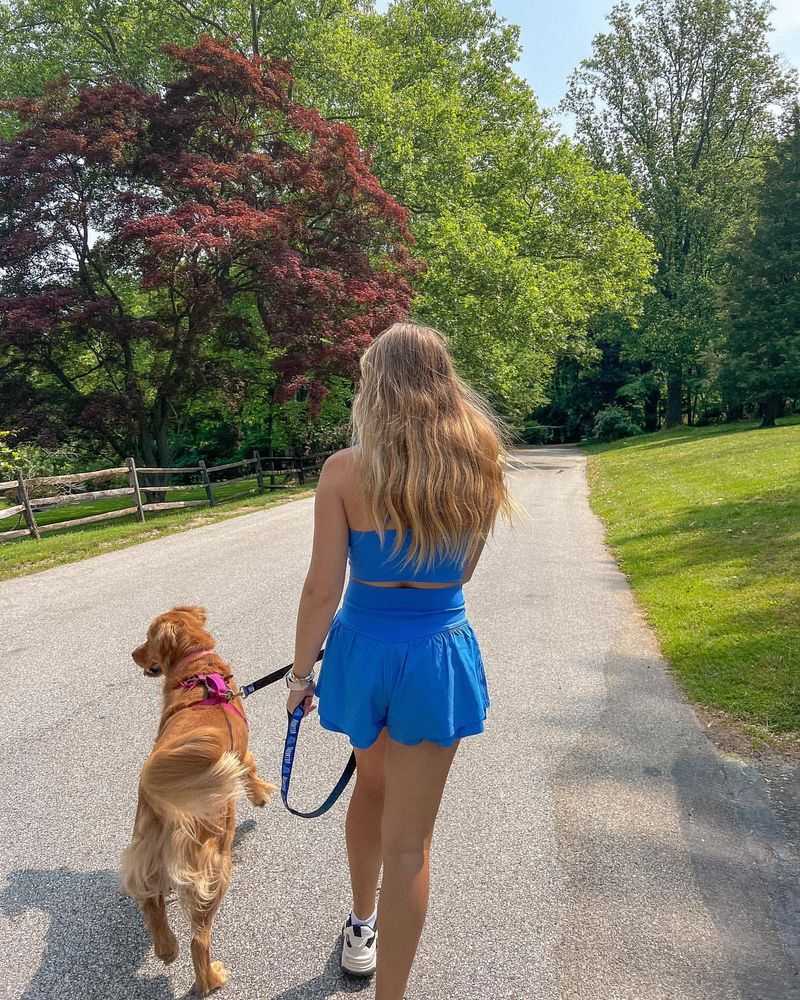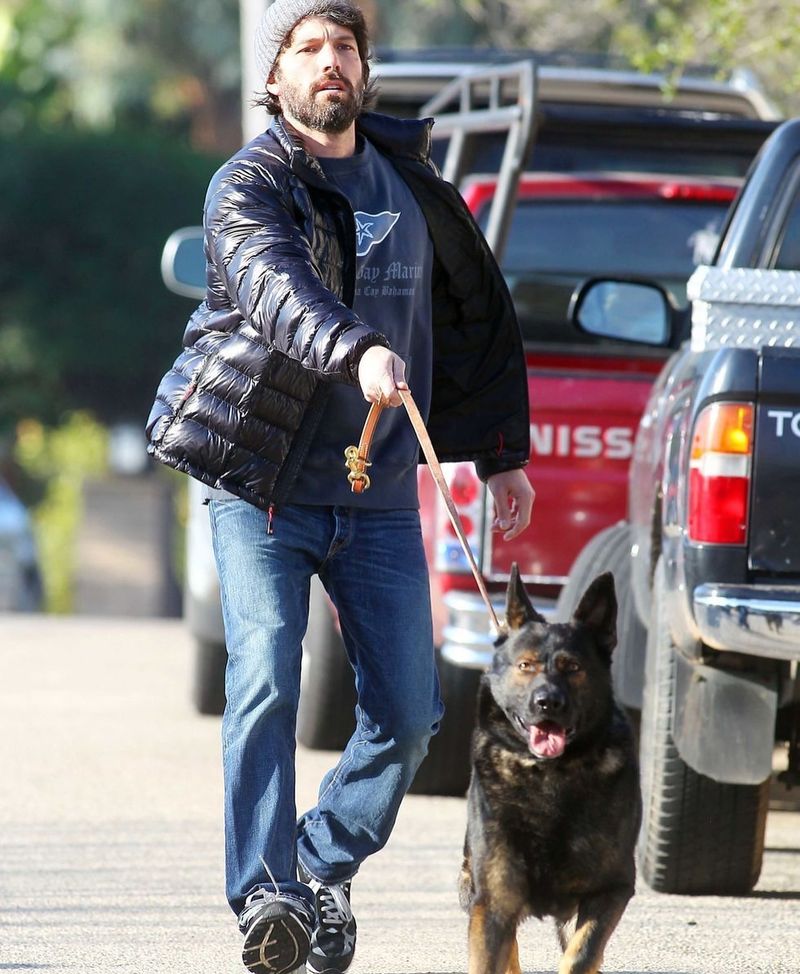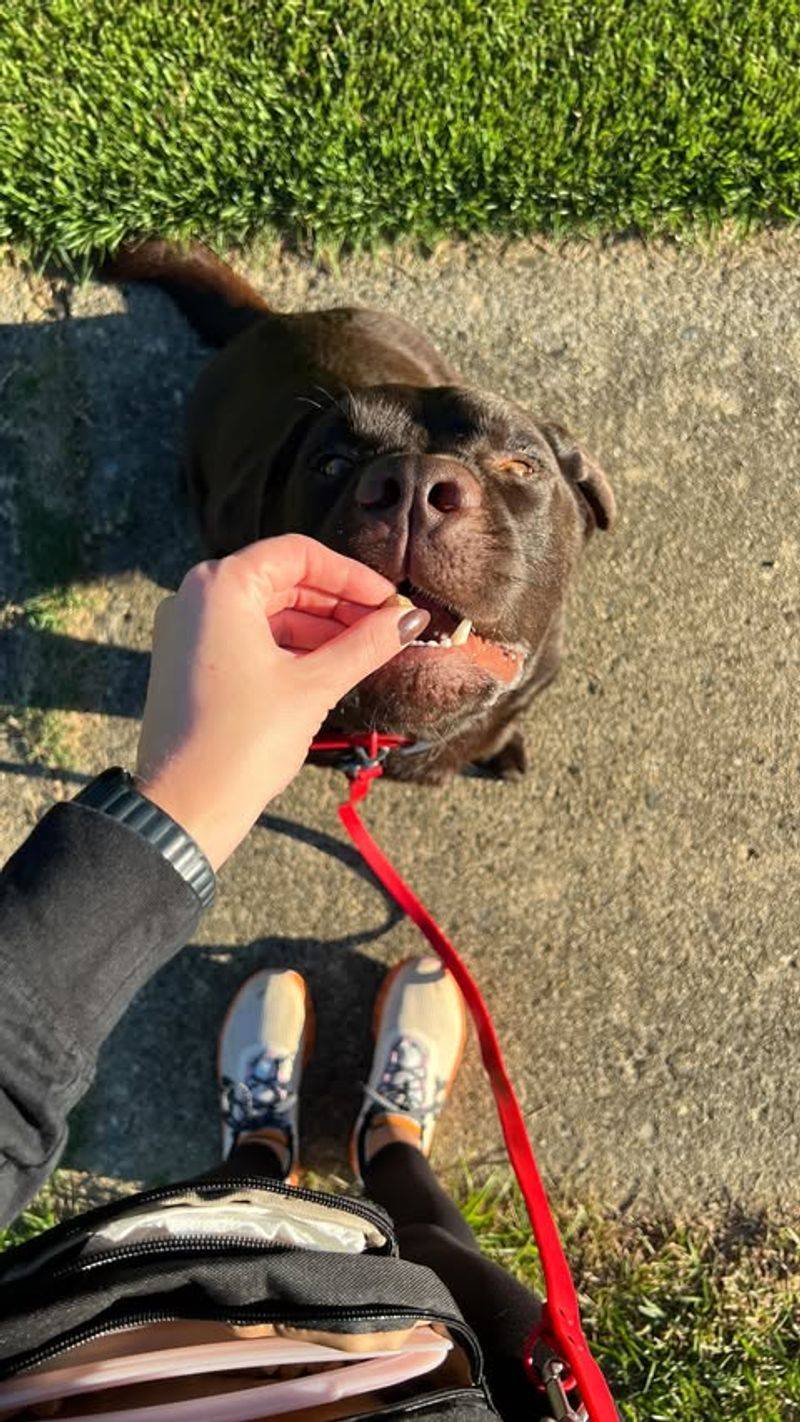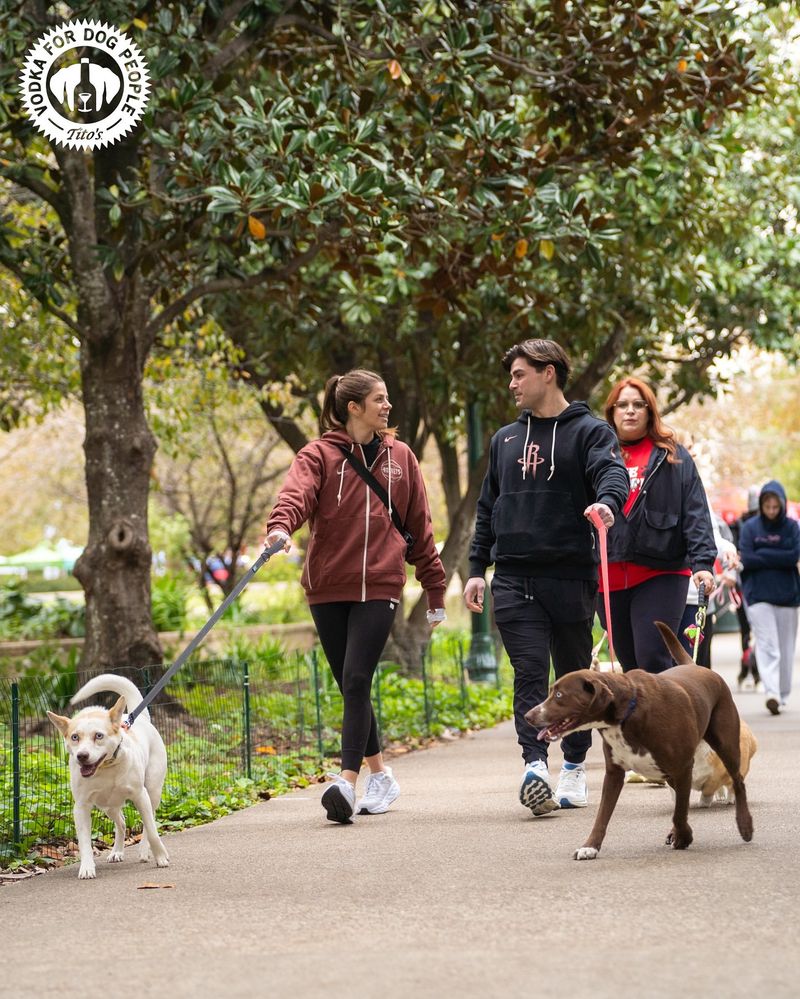Walking your dog is not just about getting some fresh air. It’s a bonding experience, a chance to exercise, and an opportunity to explore the world together. However, it can occasionally become a challenge. With these 23 essential tips, every walk can be smooth and enjoyable for both you and your furry friend.
Choose the Right Leash
Choosing the right leash is fundamental to a hassle-free walk. Opt for a leash that suits your dog’s size and temperament. A retractable leash offers freedom but can be hard to control, while a standard leash provides more security. Consider your environment; urban areas might require more control, whereas open spaces allow for longer leashes. Test different types to see which one feels comfortable in your hand. The correct leash can prevent unwanted tugging and ensure safety. Remember, a good leash will last, so invest in quality.
Use a Comfortable Collar or Harness
Comfort is key for your dog when it comes to collars and harnesses. A well-fitted collar allows two fingers to slide underneath, ensuring it’s neither too tight nor too loose. Harnesses distribute pressure more evenly, which is ideal for dogs that pull. They reduce strain on the neck and can prevent injuries. Consider your dog’s breed and behavior when choosing. Experiment with different styles to find the perfect fit. A comfortable collar or harness can drastically improve your walking experience.
Plan Your Route Ahead
Planning your route can prevent unexpected surprises. Consider the terrain, weather, and time of day. Are there busy streets or serene parks? Check for any restrictions on dogs. Mapping out your path ensures you’re prepared for any situation. It also allows you to incorporate new and exciting environments for your dog to explore. Varying your routes keeps walks interesting for both you and your dog. Planning ahead means more enjoyment and less stress.
Bring the Essentials
Preparation is vital for a successful outing. Essentials include water for both of you, especially on hot days. Carry treats to reward good behavior and reinforce training. Don’t forget waste bags to clean up after your furry friend. A small first aid kit can be handy for any minor injuries. Consider the weather and pack appropriate gear like a raincoat or umbrella. Being prepared ensures you’re ready for anything, making the walk more enjoyable and stress-free.
Set a Consistent Walking Schedule
Consistency helps establish a routine for you and your dog. Regular walks at the same time each day create predictability, reducing anxiety. Dogs thrive on routine, and knowing when their next walk is coming can make them happier and more relaxed. It also helps you stay committed to the exercise. Consider your daily schedule and find a time that works best. Whether it’s morning or evening, consistency is key to a stress-free walking experience.
Socialize Your Dog
Socialization is crucial for a well-behaved dog. Introduce your dog to different environments, people, and other animals. Early socialization prevents fear and aggression, making walks pleasant. Start with calm settings and gradually increase exposure to more stimulating environments. Let your dog observe and interact at their own pace. Positive experiences build confidence and curiosity. Encourage friendly interactions but be mindful of your dog’s comfort levels. A well-socialized dog enjoys their walks and makes them enjoyable for you too.
Teach Basic Commands
Teaching basic commands enhances control and communication. Commands like sit, stay, and heel can manage behavior and prevent pulling. Use positive reinforcement with treats or praise for successful execution. Consistent training strengthens your bond and increases trust. Practice commands in various environments to ensure reliability. Start in a quiet area and gradually introduce distractions. Patience and consistency are crucial. A well-trained dog listens and behaves, making walking a pleasure rather than a chore.
Watch for Overheating
Dogs can overheat quickly, especially in hot weather. Watch for signs like excessive panting, drooling, or lethargy. Provide plenty of water and take breaks in shaded areas. Avoid walking during peak heat times. Consider your dog’s breed, as some are more susceptible to heat. If you suspect overheating, move to a cooler area and offer water immediately. Keeping an eye on your dog’s condition ensures their safety. Being proactive prevents heatstroke and keeps walks enjoyable.
Use Positive Reinforcement
Positive reinforcement encourages good behavior and strengthens your bond. Reward your dog with treats or praise when they follow commands or behave well. Keep treats handy during walks to reinforce training. Praise should be immediate and enthusiastic. Avoid punishment as it can lead to fear or aggression. Positive experiences promote learning and create a happy walking environment. Your dog will associate walks with fun and rewards, motivating them to behave well. Consistency in reinforcement is key to success.
Be Aware of Your Surroundings
Awareness of your surroundings ensures safety and enjoyment. Monitor your dog, other dogs, pedestrians, and traffic. Stay vigilant for potential hazards like cyclists or unleashed dogs. Use your senses to anticipate and react swiftly. Stay focused and avoid distractions like phones. Awareness prevents accidents and keeps walks smooth. It also allows you to appreciate the environment and enjoy the moment with your furry friend. Mindfulness leads to pleasant and stress-free walks.
Keep Your Dog on a Short Leash in Crowded Areas
In crowded areas, a short leash provides better control. It prevents your dog from wandering or getting tangled. Short leashes allow quick responses to unforeseen situations. They’re vital for safety in busy environments. Practice using a short leash in both quiet and busy settings to ensure comfort. This control minimizes stress and keeps both you and your dog safe. It’s about maintaining a balance between freedom and safety.
Use a Reflective Vest or Collar at Night
Visibility is crucial during night walks. A reflective vest or collar ensures your dog is seen by others, reducing the risk of accidents. Combine with a reflective leash for extra safety. If walking near traffic, visibility is even more important. Look for gear that’s both reflective and comfortable. Ensure it’s properly fitted to avoid discomfort. Being visible means being safe, and peace of mind makes walks more enjoyable.
Avoid Distracting Devices
Distraction can lead to accidents. Avoid using phones or other devices during walks. Focus on your dog and surroundings. Engaging with your dog strengthens your connection and makes walks more enjoyable. Being present allows you to notice and prevent potential hazards. It also ensures you respond to your dog’s needs promptly. Distraction-free walks are safer and more rewarding for both you and your furry friend.
Adjust Your Pace to Suit Your Dog
Your pace impacts your dog’s experience. Adjust it to match your dog’s energy level and breed characteristics. Some dogs enjoy a brisk walk, while others prefer a leisurely pace. Consider the purpose of the walk – is it exercise or exploration? Be observant of your dog’s comfort and adjust accordingly. Matching their pace ensures enjoyment and reduces the risk of injury. A compatible pace makes each stroll harmonious.
Check the Weather Before You Go
Weather affects your walking plans. Check forecasts for rain, heat, or storms. Prepare accordingly with appropriate gear. Raincoats or umbrellas for wet weather; hydration for hot days. Avoid walking in extreme conditions. Knowing the weather helps you plan routes and attire. Always prioritize your dog’s health and comfort. Adjust your plans if necessary to ensure a safe and enjoyable walk. Preparation reduces stress and enhances the experience.
Watch for Signs of Fatigue
Dogs, like humans, can tire. Be mindful of signs such as lagging or reluctance to continue. Frequent breaks provide necessary rest. Consider your dog’s age, breed, and health. Puppies and older dogs may need shorter walks. If your dog seems tired, cut the walk short and head home. Monitoring fatigue prevents strain and injury. It ensures your dog remains happy and healthy. Tailoring walks to your dog’s needs enhances their wellbeing.
Avoid Over-Exerting Puppies
Puppies require special care during walks. Their growth plates are still developing, so avoid over-exertion. Short, frequent walks are ideal. Gradually increase duration as your puppy matures. Observe their energy levels and be cautious of overdoing it. Playful activities can supplement exercise needs. Adequate rest is as important as activity. Over-exertion risks injury, so always be attentive. A gentle approach ensures healthy development and a positive walking experience.
Use a Hands-Free Leash System
A hands-free leash offers convenience and control. Ideal for jogging or multitasking, it allows freedom of movement. Ensure it’s secure and suitable for your dog’s size and strength. Hands-free systems promote a more relaxed posture and can enhance the walking experience. They’re perfect for active owners looking to add exercise to their routine. Practice using it in a safe environment before heading out. Enhanced mobility makes walks more dynamic.
Always Clean Up After Your Dog
Responsible pet ownership includes cleaning up after your dog. Carry waste bags and dispose of them properly. It’s courteous and maintains public cleanliness. Unattended waste can spread disease and create a nuisance. Set a good example and encourage others to do the same. It shows respect for your community and environment. Cleaning up is a simple task with significant impact. It ensures public spaces remain welcoming and healthy.
Know Your Dog’s Limits
Understanding your dog’s limits is key to a pleasant walk. Be aware of their physical and mental endurance. Adjust walks to suit their capabilities. Overexertion leads to discomfort and potential injury. Tailor the length and intensity of walks to your dog’s age, breed, and health. Observe cues and be ready to cut walks short if needed. Knowing their limits ensures happiness and preserves health. Prioritizing their wellbeing enhances trust and bonding.
Introduce New Environments Gradually
New environments can be exciting but overwhelming. Introduce them gradually to prevent anxiety. Start with short visits and increase exposure over time. Observe your dog’s reactions and proceed at their pace. Positive reinforcement encourages exploration and confidence. Familiarity with various settings enriches their experiences. It also makes them adaptable and composed. Gradual introductions ensure comfort and safety, making walks more enjoyable.
Use Treats Wisely
Treats are a powerful tool for reinforcement. Use them to encourage desired behavior during walks. Avoid over-reliance, as it may diminish their effectiveness. Treats should be part of a balanced diet, not a substitute. Carry a small amount and offer them as rewards for good conduct. They should complement verbal praise and affection. Smart use of treats strengthens training and enhances enjoyment. Moderation and timing are vital for success.
Be Patient
Patience transforms the walking experience. Allow your dog to sniff and explore at their pace. Rushing can create anxiety and diminish enjoyment. Every walk is an adventure for them, filled with new scents and sights. Embrace their curiosity and let them lead at times. Patience fosters a stronger bond and mutual understanding. It turns walks into cherished quality time. Your calm demeanor sets the tone for a relaxing and fulfilling outing.

